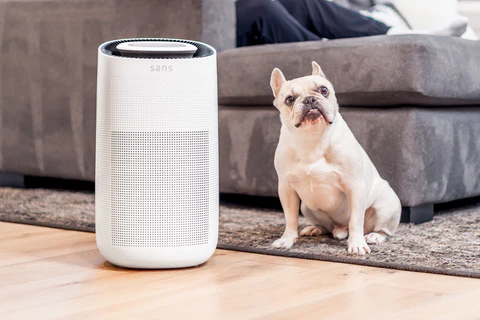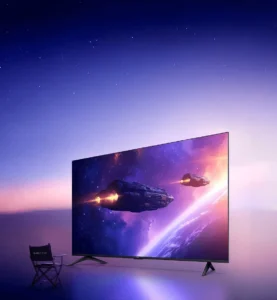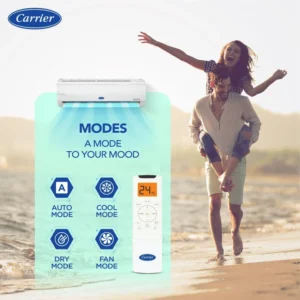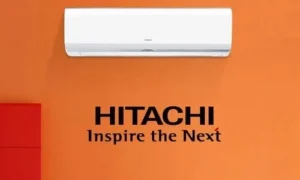Air Purifiers: An Honest Guide to Breathing Better Indoors
Alright, let’s be real. That time of year is here again, and our cities are, well, a bit of a mess when it comes to air quality. If you’ve seen the news, or just looked out your window, you know what I’m talking about. Smog, pollution, and a general haze that makes you wonder if you’ve accidentally woken up on a different planet. It’s not just about visibility; this stuff is genuinely impacting our health, with reports linking it to some pretty serious illnesses.
While an N95 mask is your best friend outdoors, what about inside your home? That’s where air purifiers come in. We’ve been diving deep into these gadgets for years, and this time around, we’ve put some of the most popular models, ranging from around ₹4,000 to ₹15,000, through their paces. We tested them all in a seriously polluted room to see what actually works. So, if you’re thinking about getting an air purifier, stick around. This is pretty much the only guide you’ll need.
Understanding the Basics: What to Look For
Before we jump into the individual reviews, there are a few foundational things you absolutely need to know. These are the non-negotiables when you’re shelling out your hard-earned cash for cleaner air.
- True HEPA Filter: This is paramount. An air purifier works by sucking in air, pushing it through a filter, and then releasing cleaner air. The magic, my friends, happens in that filter. You need a True HEPA filter. Skip anything that says “HEPA-style,” “EPA-style,” or anything that sounds like a knock-off. HEPA is an international standard, tested by independent labs, and it’s what you need for tackling PM2.5 particles.
- Closed Room Operation: This might seem obvious, but it’s often overlooked. An air purifier simply won’t work effectively if you’re running it in an open room with windows and doors ajar. Keep that room sealed for the best results.
- Modes of Operation: Most purifiers come with a few modes. “Auto” mode tries to intelligently decide how fast to run, but honestly, many sensors aren’t super accurate. “Full Speed” mode gives you maximum cleaning power, but it can be noisy – think vacuum cleaner levels of sound. Then there’s “Sleep” mode, which is quieter but cleans at a slower pace. My advice? Run it on full speed for an hour to get the air clean, then switch to auto or sleep mode.
- Filter Replacement Cost & Availability: This is the big one, and it’s where many people get burned. Filters aren’t forever; you’ll need to change them every 6 to 12 months, sometimes even sooner depending on your air quality. Always, and I mean always, check the replacement filter cost and its availability before you buy. A cheap purifier with an expensive or discontinued filter is just a fancy paperweight down the line.
Air Purifier Comparison Chart
Here’s a quick overview of the top contenders we’ve tested, focusing on the “real” air purifiers that actually make a difference.
| Model | Price Range (Approx.) | HEPA Type | CADR (m³/h) | Room Size (Sq Ft) | Key Features |
|---|---|---|---|---|---|
| Cubo Q200 | ₹6,000 – ₹6,500 | H13 | 150 | ~200 | App support, Google Assistant, affordable filter replacement |
| Philips AC0920 | ₹8,000 | True HEPA (with Pre & Carbon) | 250 | ~300 | Pre-filter, Carbon filter (smell), AQI display (gimmicky) |
| Coway AirMega 150 | ₹11,990 – ₹12,990 | True HEPA (with washable pre-filter) | 303 | Master Bedroom+ | Washable pre-filter, best cleaning performance |
| Xiaomi Mi Air 4 | ₹13,990 | Close to H13 | 400 | 400-500 | Max features, app support, automations, ionization, very fast cleaning |
The Different Types of Air Purifiers
The “Not Quite” Air Purifiers
Earth Air Purifier (AC Filter)
First up, we have this intriguing concept: a HEPA filter frame you just slap onto your split AC. The pitch is simple: no battery, no power, just let your AC do the work of sucking in air and purifying it. Sounds like a dream, right? Affordable, easy, and genius. We had to test that claim.
We let our test room’s AQI hit a whopping 420 (yes, we have a special device for PM2.5, because AQI can be a bit vague). After an hour of running the AC with this filter, it did manage to bring the PM2.5 value down to under 100. Now, a truly healthy PM2.5 is under 50, but under 100 is still an improvement.
However, there are two pretty big catches here. First, a ton of Amazon reviews mention that this thing puts a serious load on your AC. It blocks the inlet, meaning you need to crank your AC to full fan speed or set the temperature super low to get any real air intake. This could potentially ruin your AC compressor, and the money you save upfront might just go straight into AC repairs. Second, and this is a deal-breaker for me, who wants to run their AC at full blast in the middle of a cold winter just to clean the air? Exactly. It just doesn’t make practical sense for year-round use.
Key Points:
- Concept: HEPA filter frame for split AC.
- Price: Very affordable, around ₹219.
- Performance: Reduced PM2.5 from 420 to under 100 in 1 hour.
- Major Cons: Puts significant load on AC, requires AC to run at high fan speed/low temperature, noisy, impractical for cold weather.
| Pros | Cons |
|---|---|
| Extremely affordable entry point. | May damage your AC compressor. |
| Simple to set up. | Requires AC to run, impractical in winters. |
| Does offer some PM2.5 reduction. | Increases AC noise. |
Who Should Buy This?
Honestly? Almost no one. If you’re really, truly desperate for a one-off, super-budget solution and are willing to risk your AC, maybe. But for 99% of people, this is a skip. The potential damage and impracticality just aren’t worth it.
Plant Air Purifier
Next up, we stumbled upon this plant air purifier, which has been making waves online for its supposed air-purifying superpowers. The setup is pretty cool: you place any plant inside, and it supposedly forces air through the plant’s roots and jute to purify it, claiming to multiply a plant’s natural purification by ten. It even made an appearance on Shark Tank India, which, you know, adds a layer of intrigue.
While the concept is certainly interesting, and it looks like a neat desk gadget, when it comes to actual, measurable air purification, a dedicated air purifier simply blows this out of the water. It’s a good idea in theory, and perhaps it offers a tiny, negligible benefit, but for serious air quality issues, this isn’t the solution.
Key Points:
- Concept: Uses a plant to purify air by forcing air through roots/jute.
- Claim: 10x purification of a normal plant.
- Verdict: Good as a cool desk gadget, not for real air purification.
| Pros | Cons |
|---|---|
| Unique and aesthetically pleasing concept. | Does not offer significant air purification. |
| Could be a nice decorative item. | Real air purifiers are far more effective. |
Who Should Buy This?
If you’re looking for a quirky, eco-friendly desk accessory and don’t actually need serious air purification, then sure, go for it. But if your goal is to genuinely clean the air in your room, you’ll need to look elsewhere.
The Real Air Purifiers: What Works
1) Realme TechLife Air Purifier
The Realme TechLife air purifier initially launched at a higher price point, but now you can snag it for a steal, often around ₹2,799. For that price, it looks like a big, feature-packed device. It boasts a True HEPA H12 filter, which is a good standard, especially for the cost. We tested it in our polluted room, and it managed to drop the PM2.5 level from a concerning 414 down to a respectable 31 in just one hour on full speed. That’s pretty impressive performance.
It has the standard modes: Auto, Full Speed (which is quite noisy, so not for sleeping), and Sleep mode. All good on paper. However, here’s the kicker, the one reason I’d tell you to pause: Realme has, for all intents and purposes, discontinued this product. What does that mean for you? It means finding official or even third-party replacement filters is next to impossible. An air purifier without a replaceable filter is essentially a use-and-throw device after 6-12 months. That’s a huge problem, and it’s why the user ratings for this model are so low.
Key Points:
- Price: Very affordable, currently around ₹2,799.
- Filter: True HEPA H12.
- Performance: Reduced PM2.5 from 414 to 31 in 1 hour (full speed).
- Major Con: Discontinued, no filter replacements available, making it a “use and throw” product.
| Pros | Cons |
|---|---|
| Excellent initial price for features. | Product is discontinued. |
| Good air purification performance. | No replacement filters available. |
| Standard operating modes. | Becomes unusable after filter life ends. |
Who Should Buy This?
Unless you absolutely need something for just one season and are okay with it becoming e-waste afterward, you should definitely skip this one. The lack of filter availability makes it a non-starter for long-term use. Don’t fall for the low price; it’s a trap.
2) Cubo Q200
If you’re looking for a solid air purifier around the ₹6,000 mark, the Cubo Q200, a sub-brand of Hero Motors, is a contender. We picked it up for about ₹6,500, but I’ve seen it dip below ₹6,000 too. The first thing that really stands out here is the filter replacement cost: a mere ₹1,499. That’s a breath of fresh air compared to some others. It comes with a HEPA H13 filter, which is a step up from the H12 we saw in the Realme, making it even more effective.
Unlike the Realme, this one has app support, which is super handy. I can check the PM2.5 levels right from my phone, and even turn the purifier on or off remotely, even when I’m not home. Plus, it plays nice with Google Assistant, so a simple “Hey Google, turn on air purifier” does the trick. The CADR (Clean Air Delivery Rate) is 150, which means it’s good for a room of about 200 square feet. In our tests, it brought the PM2.5 level from a high of 430 down to around 90-100 in an hour. While not as low as some premium models, it’s a significant improvement for its price point.
The only real downside I found is the lack of a pre-filter. If you have pets at home, this means the main HEPA filter will likely clog up faster, lasting perhaps only 3 to 4 months instead of the typical 6-12. So, you’ll need to be a bit more diligent about checking and replacing that filter if you have furry friends.
Key Points:
- Price: Around ₹6,000 – ₹6,500.
- Filter: HEPA H13.
- Filter Replacement Cost: Very affordable at ₹1,499.
- CADR: 150 (suitable for ~200 sq ft rooms).
- Features: App support (remote control, PM2.5 monitoring), Google Assistant integration.
- Performance: Reduced PM2.5 from 430 to 90-100 in 1 hour.
- Con: No pre-filter, meaning shorter filter life with pets.
| Pros | Cons |
|---|---|
| Excellent value for money. | No pre-filter, potentially shorter filter life. |
| Affordable filter replacements. | May not bring PM2.5 as low as premium models. |
| Smart features (app, voice control). |
Who Should Buy This?
If you’re on a budget and need a reliable air purifier for a smaller room, like a bedroom, the Cubo Q200 is a really good option. It offers solid features and performance without breaking the bank, just be mindful of filter changes if you have furry friends.
3) Philips AC0920
Stepping up the budget slightly to around ₹8,000 brings us to the Philips AC0920. For this price, you get a higher CADR of 250, meaning it can comfortably cover a larger room, easily up to 300 square feet. A big plus here, unlike the Cubo, is the inclusion of a pre-filter. This is great for catching larger particles like human hair or pet fur, which helps extend the life of your main HEPA filter. It also has a carbon filter, which Philips claims can remove about 50% of smoke smells – handy if you do a lot of puja or have other odors in your home. Generally, this filter setup should last you about a year.
The purifier does come with a display that shows the AQI value, but honestly, I found it a bit gimmicky. Our external PM2.5 reader often showed different numbers compared to the Philips display, and even compared to Xiaomi’s. This just reinforces my earlier point: don’t rely solely on the purifier’s built-in sensor for accuracy. Always run it on full speed initially. In our tests, the Philips AC0920 did a fantastic job, bringing the PM2.5 value down from 472 to a very low 30 in just one hour.
The main drawback with this model is the filter replacement cost. While the filter lasts longer, a replacement pack, including the carbon filter, can set you back around ₹4,500. And sometimes, finding these filters online can be a bit of a treasure hunt; you might even need to call or visit a Philips service center to get one. That’s a bit of a hassle, and the cost adds up over time.
Key Points:
- Price: Around ₹8,000.
- CADR: 250 (suitable for ~300 sq ft rooms).
- Filters: Includes pre-filter (for hair/fur) and carbon filter (for odors). Filter life ~1 year.
- Display: AQI display, but often inaccurate.
- Performance: Reduced PM2.5 from 472 to 30 in 1 hour.
- Con: High filter replacement cost (₹4,500), and availability can be an issue.
| Pros | Cons |
|---|---|
| Effective for larger rooms. | Expensive filter replacements. |
| Includes pre-filter and carbon filter. | Filter availability can be an issue. |
| Good overall cleaning performance. | Built-in AQI display is not always accurate. |
Who Should Buy This?
If you have a bedroom or a slightly larger room and want the benefits of a pre-filter and carbon filter for odors, the Philips AC0920 is a solid choice. Just be prepared for the higher ongoing cost and potential hassle of finding replacement filters.
4) Coway AirMega 150
Now, if you’re serious about air purification and willing to invest a bit more, the Coway AirMega 150 is, in my humble opinion, probably the best air purifier we’ve tested over the years. It’s from an international brand and typically hovers around ₹12,990, though I’ve seen it drop to ₹11,990 during sales.
There are three big reasons why this one shines. First, it features a washable pre-filter. This is a game-changer! You can simply wash off accumulated hair and dust, making it reusable and extending the life of your main filter. The main replacement filter itself costs around ₹2,999. Second, its CADR is a robust 303, meaning it can easily handle a master bedroom or a similarly large space. Third, and most importantly, its cleaning performance is simply unmatched. In our tests over the past three years, the Coway AirMega has consistently brought the PM2.5 value down to under 50 in just half an hour. That’s incredibly fast and effective.
The only real “cons” are minor creature comforts. It doesn’t have an AQI display, there’s no app support, and you won’t find any fancy touch buttons. It’s a no-frills workhorse. But when it comes down to its core job – cleaning the air – it does it better than anything else on this list. For me, that’s what truly matters.
Key Points:
- Price: Around ₹11,990 – ₹12,990.
- Filter: True HEPA with washable pre-filter.
- Filter Replacement Cost: ₹2,999 (main filter), pre-filter is washable.
- CADR: 303 (easily covers master bedrooms).
- Performance: Best in class, reduced PM2.5 to under 50 in just 30 minutes.
- Cons: No AQI display, no app support, no fancy touch controls.
| Pros | Cons |
|---|---|
| Unmatched air cleaning performance. | Lacks smart features (app, display). |
| Washable pre-filter saves money. | Higher initial investment. |
| Fast and effective. |
Who Should Buy This?
If your absolute top priority is pure, unadulterated air cleaning performance, and you’re willing to pay a bit more for it, the Coway AirMega 150 is the one to get. It might not have all the bells and whistles, but it gets the job done, and it gets it done fast.
5) Xiaomi Mi Air 4
Finally, if you’re ready to spend a bit more and need something robust for a larger room or even a hall, the Xiaomi Mi Air 4 comes in at around ₹13,990. Xiaomi uses its own filter type, but it’s HEPA-verified and can be considered quite close to a HEPA H13 standard. With a CADR of 400, this beast can easily handle spaces between 400 to 500 square feet.
Where the Xiaomi Mi Air 4 truly shines is its feature set. It probably has the most features on this entire list. You get comprehensive app support, allowing you to check the PM2.5 levels, monitor filter life, and even set up smart automations. For example, I’ve personally set mine to automatically turn on when the PM2.5 level goes above 200. That’s pretty slick. It’s also the only air purifier on this list that includes ionization, which means it can emit negative ions for an added layer of air purification.
And when it comes to cleaning, it’s seriously fast. It managed to bring the PM2.5 level down to under 40 in just 20 minutes in our tests. While we still recommend running it for an hour for a thorough clean, that initial speed is impressive.
Key Points:
- Price: Around ₹13,990.
- Filter: Xiaomi’s own HEPA-verified filter, close to H13.
- CADR: 400 (suitable for 400-500 sq ft rooms/halls).
- Features: Extensive app support (PM2.5, filter life, automations), ionization.
- Performance: Very fast, reduced PM2.5 to under 40 in just 20 minutes.
| Pros | Cons |
|---|---|
| Ideal for large rooms and halls. | Higher price point. |
| Feature-rich with smart automations. | |
| Includes ionization technology. | |
| Extremely fast air cleaning. |
Who Should Buy This?
If you have a larger living space or a hall that needs serious air purification, and you appreciate smart features, app control, and super-fast cleaning, the Xiaomi Mi Air 4 is a fantastic choice. It offers a premium experience with all the bells and whistles.
Key Takeaways
After putting these purifiers through their paces, here are the absolute most crucial bits of advice I can give you:
- True HEPA is Non-Negotiable: Don’t compromise on the filter type. It’s the heart of the machine.
- Check Filter Replacement: This is where hidden costs lurk. Always verify availability and price before committing.
- Run on Full Speed First: Don’t trust the auto mode immediately. Blast it on full for an hour to get the air clean, then switch to a quieter setting.
- Match CADR to Room Size: A small purifier in a large room is just spinning its wheels. Get one that’s appropriately sized.
- Avoid Gimmicks: “Organic” purifiers or AC filters might sound appealing, but they often fall short of real performance.
Summary
Navigating the world of air purifiers can feel a bit overwhelming, but hopefully, this honest look helps clear the air, literally. We’ve seen that while some budget-friendly “solutions” might seem tempting, they often come with hidden costs or simply don’t deliver. When it comes to real air purifiers, options like the Cubo Q200 offer great value for smaller rooms, while the Philips AC0920 steps up for medium-sized spaces with added filtration. For sheer cleaning power, the Coway AirMega 150 is a standout, and if you need a feature-packed device for a large hall, the Xiaomi Mi Air 4 is a strong contender. Ultimately, the best air purifier for you depends on your room size, budget, and how much you value smart features versus raw cleaning performance. But one thing is for sure: investing in a proper air purifier is a smart move for your health, especially when the air outside isn’t cooperating.





